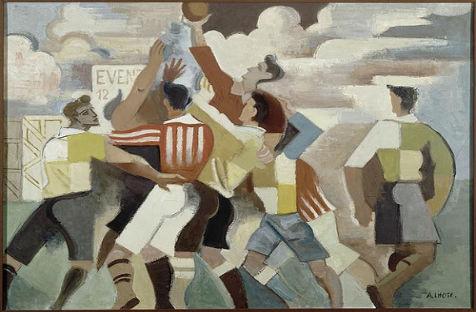Being mentally healthy is just as important as being physically healthy. However, maintaining good mental health is complex with the need to support opportunities for good mental health and wellbeing across all facets of our life.1-3 Community settings involving arts and sports events are a major focus for community participation and are an ideal setting for promoting good health.4
The health benefits of participation in the arts, cultural activities, sport, and recreation are well documented.5-7 However little is known about differences in mental health outcomes between activities (e.g. arts versus sport) and levels of engagement (i.e. participation versus spectator). The sponsorship of arts, sports, and racing events to build health message awareness and the positive impact of cognitive-behaviour models and social marketing approaches in these settings has been well documented.8-10 Yet, few studies have considered the mental health and wellbeing benefits of participation at different types of community events. It is also unclear whether the benefits for sports spectators and arts audiences are truly comparable, and what the fundamental differences or possible synergies exist between arts and sport participation.
Our Healthway-funded pilot research sought to more clearly define participation and attendance at both sports and arts events and explore the mental health and wellbeing outcomes, specifically personal wellbeing and life satisfaction, for those who engage in these events.
Researchers attended 13 Healthway-sponsored sports events and 13 Healthway-sponsored arts events in the Perth metropolitan area. Participants and spectators were intercepted at the event and asked a range of event, mental health and demographic questions. The data collection occurred from July to December 2011 and was based on a method previously established by Holman et al.8 Respondents were categorised according to the type of event and nature of their engagement at the time they were surveyed and were also asked about their previous engagement in sports and arts activities as both participants and spectators.
There was considerable diversity in the nature of respondents’ engagement in sports and arts activity. Thus, the simple four group comparison of sport participants, sports spectators, arts participants, and arts spectators would have misrepresented true engagement patterns. Instead, among the 510 people surveyed eight engagement pattern groups were found to exist: attend sports events (6%); attend arts events (7%); attend sport and arts events (18%); attend and participate in sport and attend arts (35%); attend sport and attend and participate in arts events (4%); and attend and participate in sport and attend and participate in the arts (7%).
Preliminary results suggest that both attendance and participation in sports and arts events has a positive influence on wellbeing. Analysis of this data is ongoing and it is anticipated that the research will provide a deeper understanding of the quality and types of mental health and wellbeing outcomes from community engagement. In particular, it will help provide a more definitive understanding of the process and mechanisms that contribute towards mental health and wellbeing in community settings and whether the mental health and wellbeing outcomes of sports participation and attendance are actually comparable, similar, different, or complement arts participation and attendance.
References
1. Keleher H, Armstrong R. Evidence-based mental health promotion resource. Melbourne: Department of Human Services & VicHealth, 2005.
2. Epidemiology Branch. Population health in perspective in Western Australia. Perth: Department of Health Western Australia, 2004.
3. Clifford Beers Foundation, Mentally Healthy WA. Perth Charter for the Promotion of Mental Health and Wellbeing. Perth: Seventh World Conference on the Promotion of Mental Health and the Prevention of Mental and Behavioural Disorders, 2012.
4. Lahtinen E, Joubert N, Raeburn J, Jenkins R. Strategies for promoting the mental health of populations. In: Herrman H, Saxena S, Moodie R, editors. Promoting Mental Health. Geneva: World Health Organisation, 2005, p. 226-42.
5. Torjman S. Culture and recreation: Links to well-being. Ottawa: Caledon Institute of Social Policy, 2004.
6. VicHealth. Together we do better. Victorian Health Promotion Foundation (VicHealth), 2005 [cited 2005 12 March]; Available from: http://www.togetherwedobetter.vic.gov.au.
7. Bygren LO, Konlaan BB, Johansson S-E. Unequal in death. Attendance at cultural events, reading books or periodicals, and making music or singing in a choir as determinants for survival: Swedish interview survey of living conditions. British Medical Journal, 1996, 313:1577-80.
8. Holman CDJ, Donovan RJ, Corti B, Jalleh G, Frizzell SK, Carroll AM. Evaluating projects funded by the Western Australian Health Promotion Foundation: first results. Health Promotion International, 1996, 11(2):75-88.
9. Mills C, Knuiman M, Rosenberg M, Wood L, Ferguson R. Are the arts an effective setting for promoting health messages? Perspectives in Public Health [serial on the Internet], 2011, Available from: http://rsh.sagepub.com/content/early/2011/10/05/
10. Jalleh G, Donovan RJ, Corti B, Holman CDJ. Sponsorship: Impact on brand awareness and brand attitudes. Social Marketing Quarterly, 2002, 8(1):35-45.





